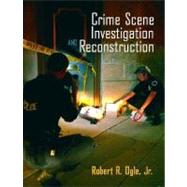
| Foreword | |
| About the Author | |
| Introduction to Physical Evidence | |
| Crime Scene Search Principles | |
| Crime Scene Photography | |
| Crime Scene Sketches | |
| Latent Fingerprint Evidence | |
| Hair and Fiber Evidence | |
| Glass, Paint and Soil Evidence | |
| Arson Accelerant Evidence | |
| Biological Fluid Stain Evidence: Blood and Semen | |
| Firearms Evidence | |
| Impression Evidence | |
| Drug and Alcohol Evidence | |
| Document Evidence | |
| Vehicle Investigations | |
| Sexual Assault Investigations | |
| Homicide Investigations | |
| Crime Scene Reconstruction | |
| Crime Scene Report Writing | |
| Courtroom Testimony | |
| Crime Scene and Forensic Texts | |
| Physical Evidence Chart | |
| Computer Evidence | |
| Entomological Evidence | |
| Answers to Chapter Questions | |
| Glossary | |
| References | |
| Index | |
| Table of Contents provided by Publisher. All Rights Reserved. |
The New copy of this book will include any supplemental materials advertised. Please check the title of the book to determine if it should include any access cards, study guides, lab manuals, CDs, etc.
The Used, Rental and eBook copies of this book are not guaranteed to include any supplemental materials. Typically, only the book itself is included. This is true even if the title states it includes any access cards, study guides, lab manuals, CDs, etc.